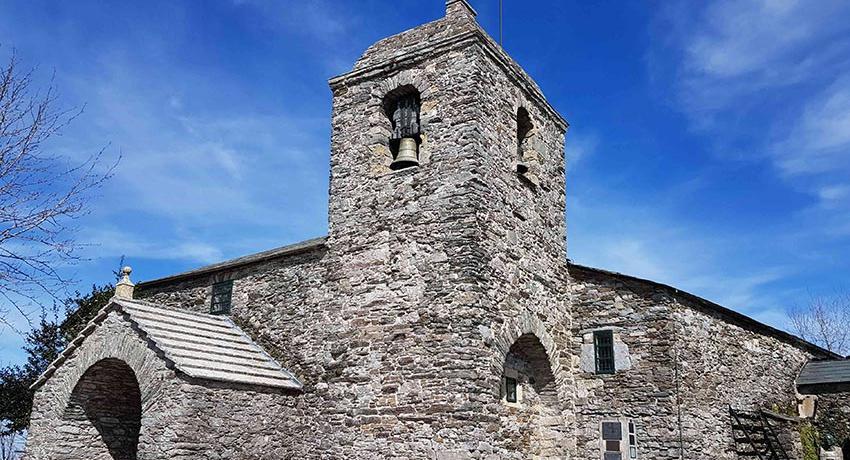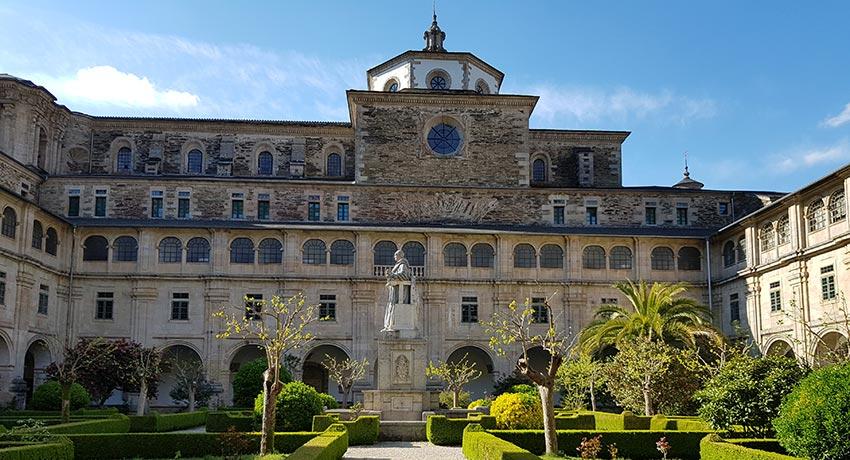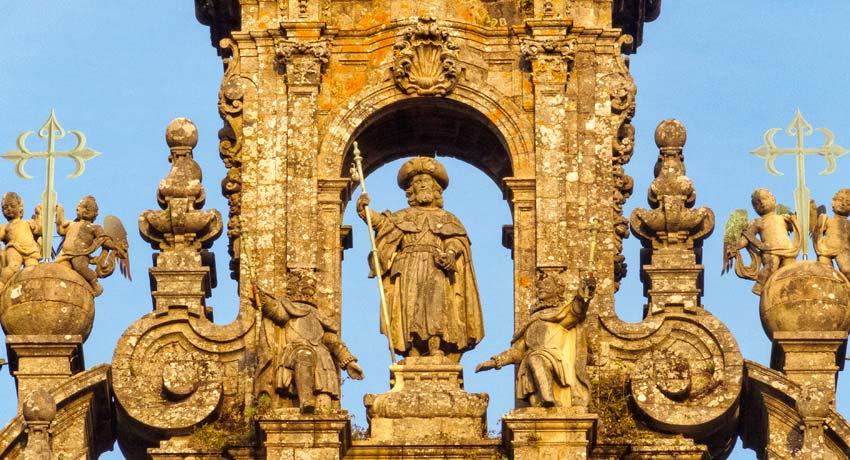Camino Miracles
El Camino (Way of St. James) is a walking Catholic pilgrimage that you can start anywhere in the world and end in Santiago de Compostela. Why does it end in Santiago? Because the pilgrimage is made with the intention of paying your respects to Saint James the Apostle (Santiago), patron saint of Spain. When you complete the pilgrimage to Santiago, you are rewarded with an indulgence from the Catholic Church.
But who was Saint James?
St. James the Apostle arrived in the Iberian Peninsula from Jerusalem to preach the Gospel in the northern regions of Spain.
When he returned, he was captured and beheaded by King Herod, who also forbade that James be buried on his land. St James’ faithful disciples in Spain learned of this news and decided to bring him back to Spain.
They travelled back on a vessel made of stone through a route that took them along the Atlantic coast and through the Ulla river, until they docked at the village of Padron, in the Roman province of Iria Flavia, the capital of Roman Galicia. The arrival dock (el Pedron) is conserved to this day inside the Church that was built on the site. St. James’ body was buried in a nearby cemetery by the Liberum Donum forest, and the site was covered with an altar over his stone coffin.
After the Christian prosecutions of the time, visits to holy sites were forbidden and the site was abandoned and forgotten until 813 A.D. when a hermit named Pelagius saw bright lights and heard singing that brought him to the burial site.
The bright shining lights inspired him to describe the place as Campus Stellae (“Field of Stars”) that eventually evolved to “Compostela” as we know it today.
During this time, the Iberian peninsula (where Portugal and Spain stand today) was under invasion by tribes from the Arabian peninsula and northern Africa.The invaders were strong, fearless, and well-armed so a successful resistance movement would need nothing less than a miracle to overcome them.
The situation was of great concern for European Christians, as the Iberian Peninsula is a strategic enclave in Europe and the Arab occupation was threatening them. Finding St James’ tomb at this precise point in time was taken as a miraculous sign that the patron Saint of Catholic Spain would support the resistance efforts against the invaders.
On 844A.D., a few years after the tomb’s discovery, St James is said to appear on a white horse and lead Christian resistance forces to victory at the battle of Clavijo, a turning point in the resistance efforts to drive the invader troops from Spain. A depiction of this event is carved on the tympanum of the Santiago de Compostela Cathedral.
It is during this historical context that the pilgrimage to Santiago de Compostela takes form. All these miraculous signs and tales are shared throughout the rest of Spain and Europe and around the 10th century the pilgrimage route is well established as one of the most popular in Europe. Hundreds of thousands of pilgrims have walked the route since, and other miracles have been reported since then.
In the beginning of the 15th century, a German family stopped overnight to pray at the tomb of Santo Domingo de la Calzada, in a village of the same name on their route to Santiago. The daughter of the town’s innkeeper developed feelings for the son of the German couple, but he did not correspond her. Furious, she hid a silver cup in his luggage and had him arrested for theft. He was sentenced to death by hanging but even so, his distraught parents chose to continue their pilgrimage.
When they returned to the town to claim his body, they found the son still hanging from the gallows but miraculously alive.
They went to notify the judge who was at lunch. With a rooster and a hen already on his plate, he replied: “your child is no more alive than the animals on my plate”. As soon as he said that, the animals jumped up from the plate and started singing. The son was taken down from the gallows and released. To this day, a rooster and a hen are kept inside the abbey of Santo Domingo in memory of this event.
A second notable event is said to have taken place in the 14th century at Obanos, a village close to Eunate in Navarra, known for the legend of Saint Guillen and Saint Felicia, children of the Dukes of Aquitania. Felicia had decided to leave home and quit her prior life of nobility and privilege to go serve the poor.
Her brother Guillen went after her to convince her to reconsider as she had a most pleasant life and an arranged marriage waiting for her instead. She refused to reconsider and in the ensuing argument, Guillen killed her.
Full of regret, Guillen made the pilgrimage on el Camino de Santiago to ask for forgiveness. Upon his return, he built the Arnotegi church and he settled there, living a contemplative life dedicated to serving the poor, a decision that earned him sainthood later. This legend is reenacted in the town’s square every August since the 1950s and is a sight to behold. The original statue of the Virgin Mary from the Arnotegi church is conserved to this day at the site.
The most well-known miracle on el Camino took place at O Cebreiro, a small town where el Camino crosses into Galicia, at the top of a mountain about 3300 ft over sea level. Walking up the mountain on el Camino takes a lot of effort but it is extremely rewarding for pilgrims, because of the landscapes and views of the valleys below.
The town on the mountain summit has a Monastery and that is where the miracle took place in the 14th century. Legend has it that a farmhand would attend mass every single day at the monastery.
Rain, shine, snow or storm, nothing would hold the peasant back and the priest was impressed by his faith.
On a particularly raining and freezing day with impassable conditions on the mountain, the laborer still made it to mass, soaked to the bone. The monk told him that it was not worth risking his health to attend daily mass but, during the ceremony, the Host turned into flesh and the wine turned into blood that overflowed and stained the altar red.
News of the miracle spread fast and the Catholic Kings, Isabella and Ferdinand, visited the site and donated a reliquary that is still displayed in the chapel today. The emblem of the Galicia province has a chalice on it, in memory of this miracle.
In the more recent centuries, there are other stories about events that happened on the Camino de Santiago, but none as remarkable as those, although you could always ask Shirley MacLaine. After she walked the Camino in 1994 she wrote “The Camino, a Journey of the Spirit”, a book that tells some of the many stories that she heard on the trail.
Tales, legends, magic, miracles, no one knows, but everything is possible on el Camino. What is certain is that after all these years, people continue to be changed by the pilgrimage experience no matter where they come from nor the reasons why they embark on their journey to Santiago. Will you be next?




Comments
Thank you
It is very nice to read your site, thank you very much for your work, it's great!